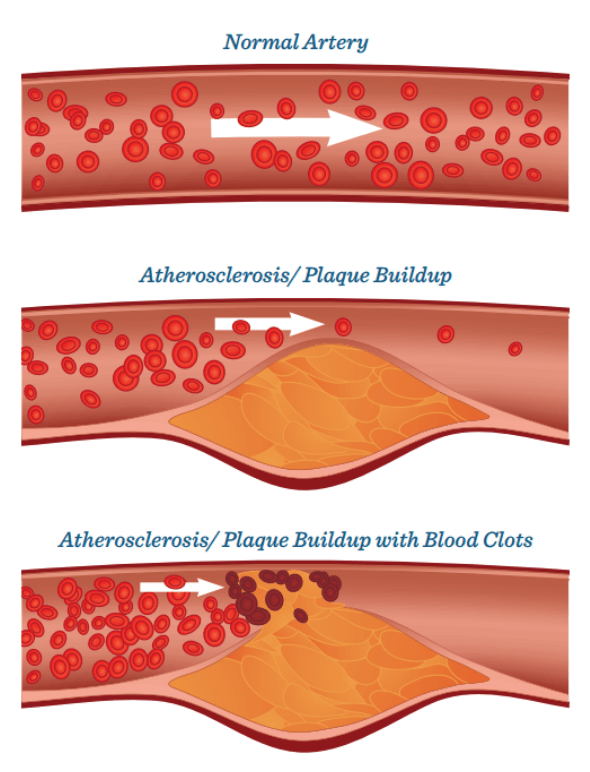About Cardiovascular Disease
Cardiovascular disease (CVD) is a complex condition that affects the arteries that supply blood to the heart and other organs within the body. The term cardiovascular disease refers to a constellation of medical issues and comorbidities that contribute to the buildup of plaque or atheroma in the arteries. This buildup in the arteries creates a disruption of the flow of arterial blood to the heart and affected organs.
Over time, this may result in damage to the heart, brain, kidneys and other associated areas. The damage caused by plaque build-up can affect normal organ function and reduce the ability of the patient to live a normal life.
Cardiovascular disease is not limited to the coronary arteries and patients with CVD may also have a complex arterial disease that can affect the arteries leading to the brain (cerebral) and peripheral arteries that supply limbs with arterial blood. This may lead to a reduction in blood flow to the brain causing stroke and to the limbs which can contribute to significant ongoing limb complications such as ulcers and peripheral neuropathies.1
What is the prevalence of Cardiovascular Disease?
Cardiovascular disease is highly prevalent in Australia and it’s estimated that approximately 27% of all deaths recorded may have been attributed to cardiovascular disease. Associated deaths that are caused by complications related to cardiovascular disease is also a significant contributor to overall deaths in Australia.
These deaths include deaths related to:
- Coronary heart disease,
- Stroke,
- Heart failure and cardiomyopathy, and
- Hypertension.2
Economic Impact of Cardiovascular Disease in Australia
Cardiovascular disease accounts for approximately 14% of disease burden in Australia and costs approximately $10 billion (8.9%) of the total health expenditure. Interestingly, approximately 38% of the disease burden was considered to be both preventable and/or modifiable in a 2015 Australian government report.3
What are the risks for Cardiovascular Disease?
The risk factors for cardiovascular disease have been classified into two main groups:
- Hereditary causes including genetic disposition, history and ethnicity being that Indigenous Australians have a higher risk profile than non-indigenous Australians.
- Modifiable causes which these include but are not limited to:
- Smoking,
- Poor diet,
- High alcohol intake,
- Obesity,
- Hypercholesterolaemia (high cholesterol levels can also have a significant genetic risk profile and be difficult to lower due to this occurrence),
- Hypertension, and
- Diabetes.
It’s important to note that there may be limited capacity to use lifestyle modifications to reduce the risk of cardiovascular disease in some areas due to genetic influence.3
Complications of Cardiovascular Disease
There are many known complications of cardiovascular disease, however, for the purpose of this site, we will concentrate on four major systems affected by cardiovascular disease.
Atherosclerosis refers to plaque build-up and is known to reduce the size of the artery inner lining, therefore, reducing the amount of blood that can flow through the artery to the affected organ and potentially causing damage to that organ. Pieces of this plaque can also potentially break free and cause a further obstruction in smaller blood vessels and cause damage to other areas within the body. This damage can also cause a micro-vascular injury from the obstruction or reduction in blood flow to the affected area.
An immune response is triggered where body cells aggregate or ‘collect’ around the site of the plaque build-up and can further increase the risk of an obstruction to blood flow. The inner lining of the artery may also change to further reduce the blood flow through affected arteries.

